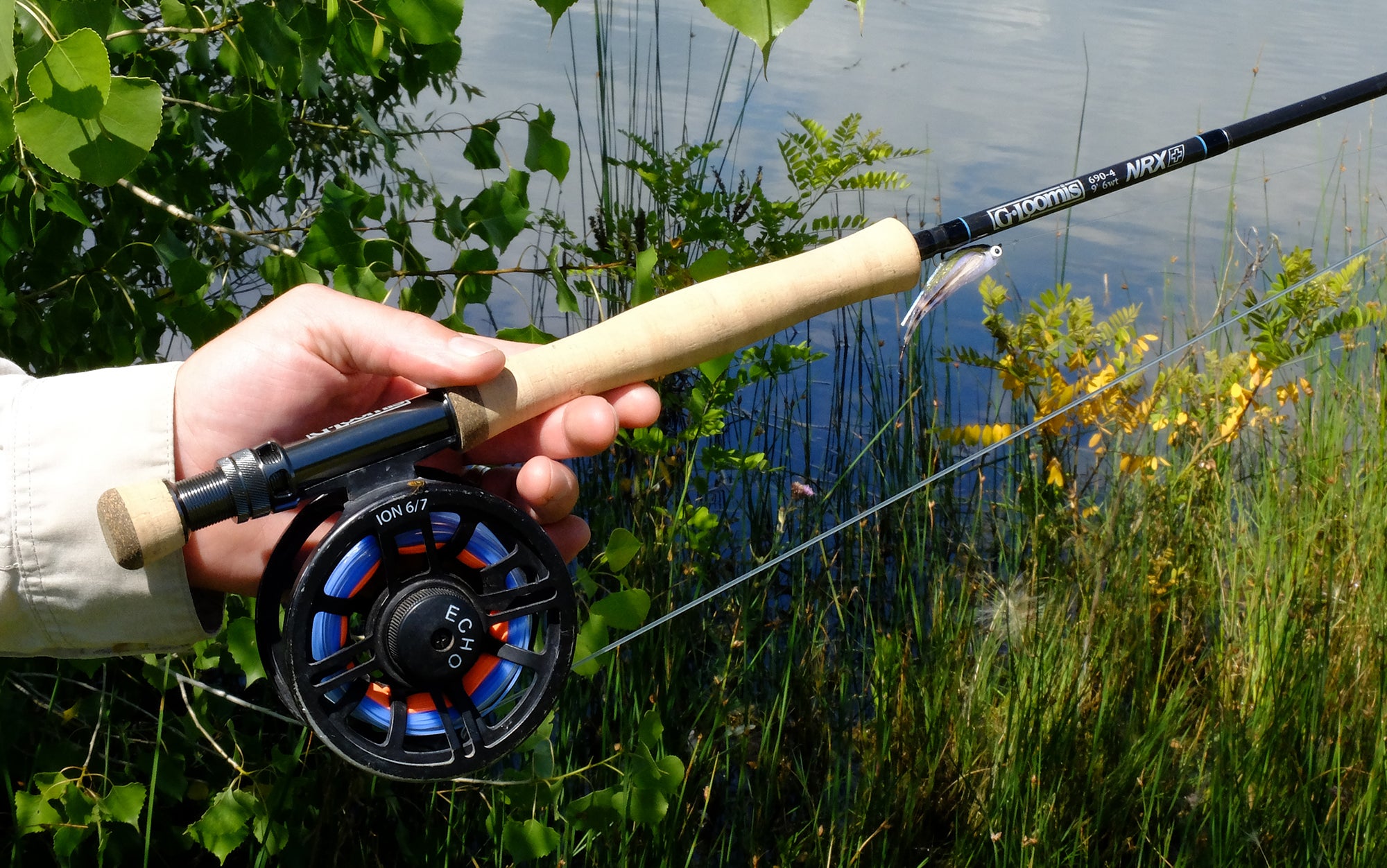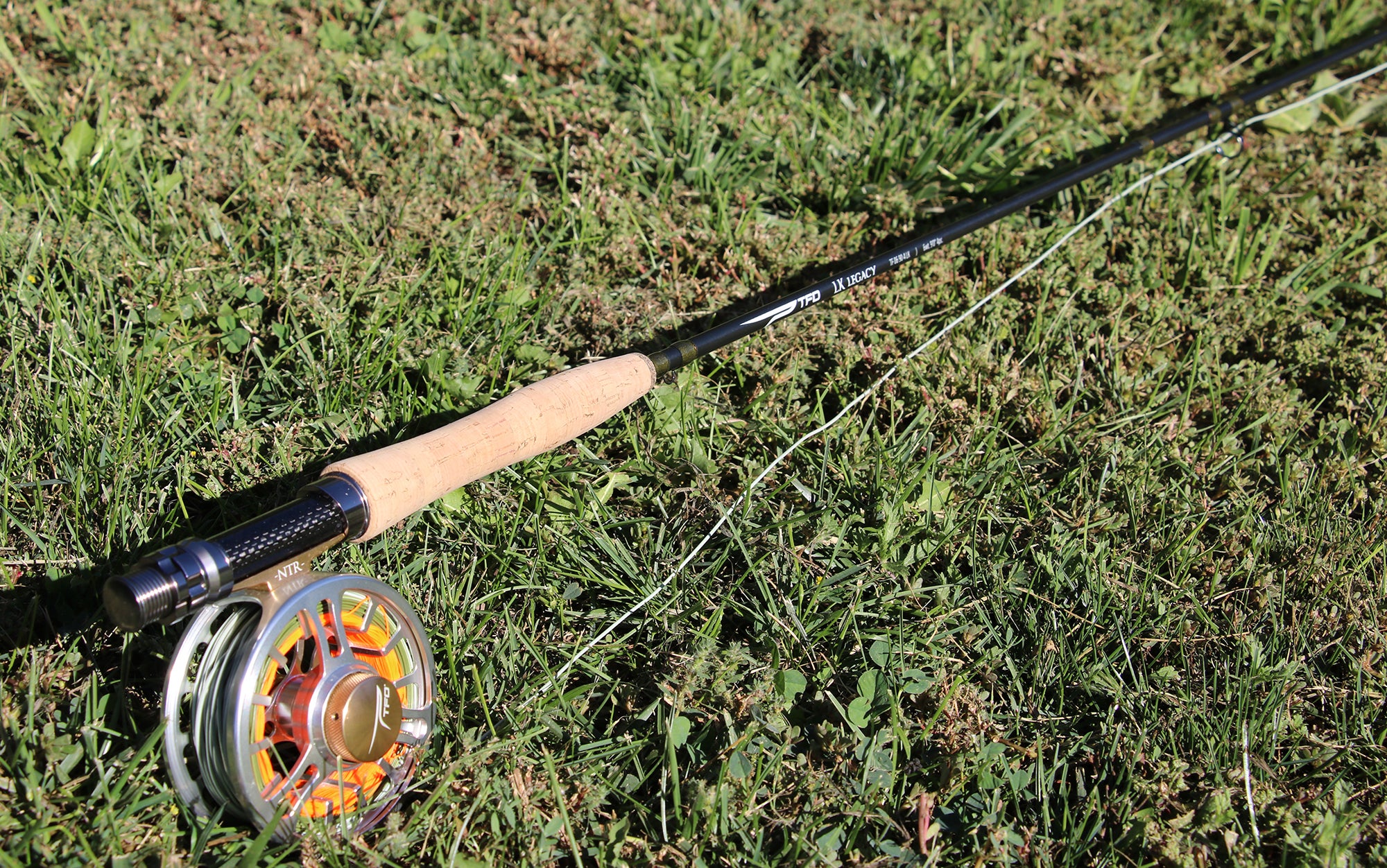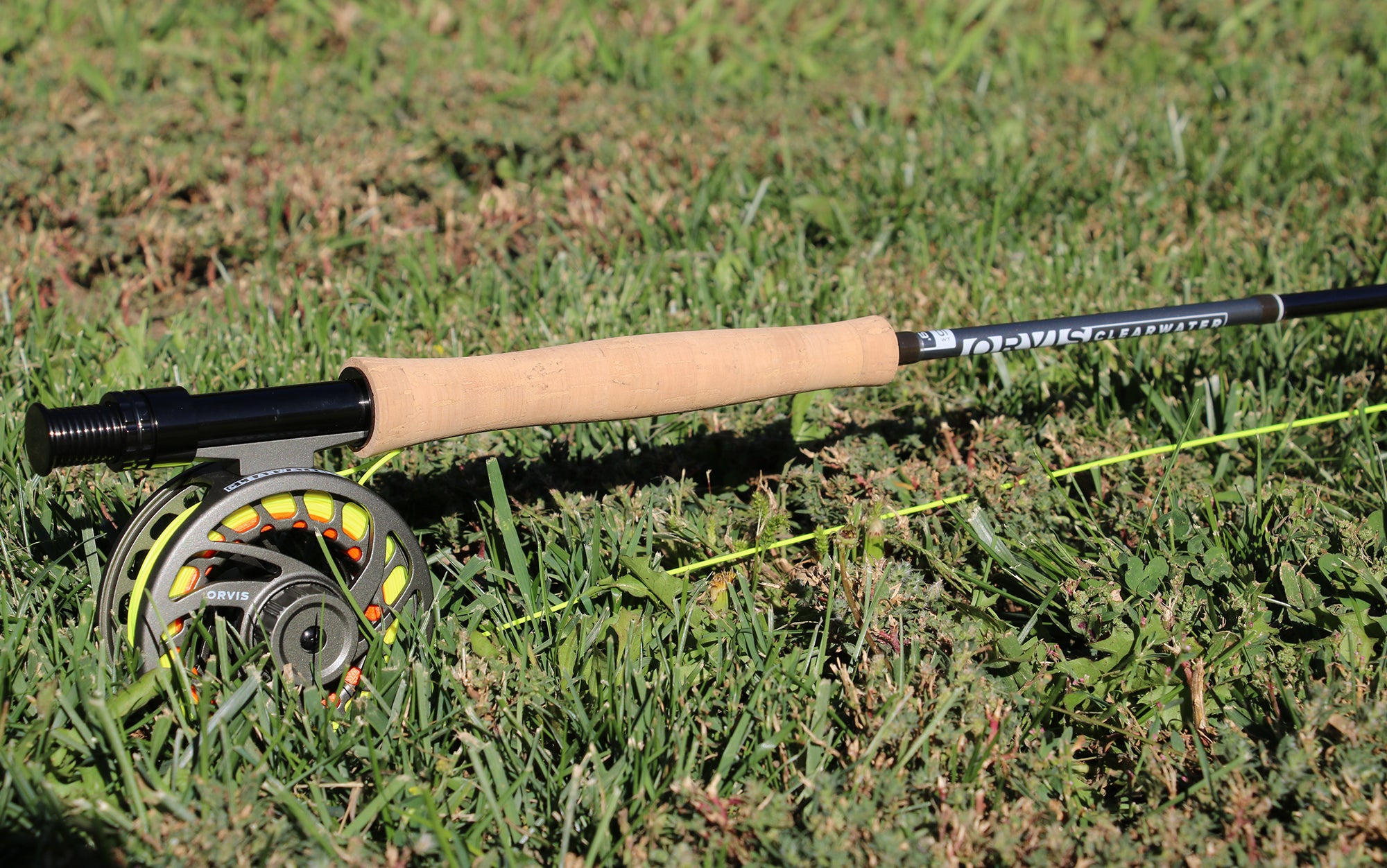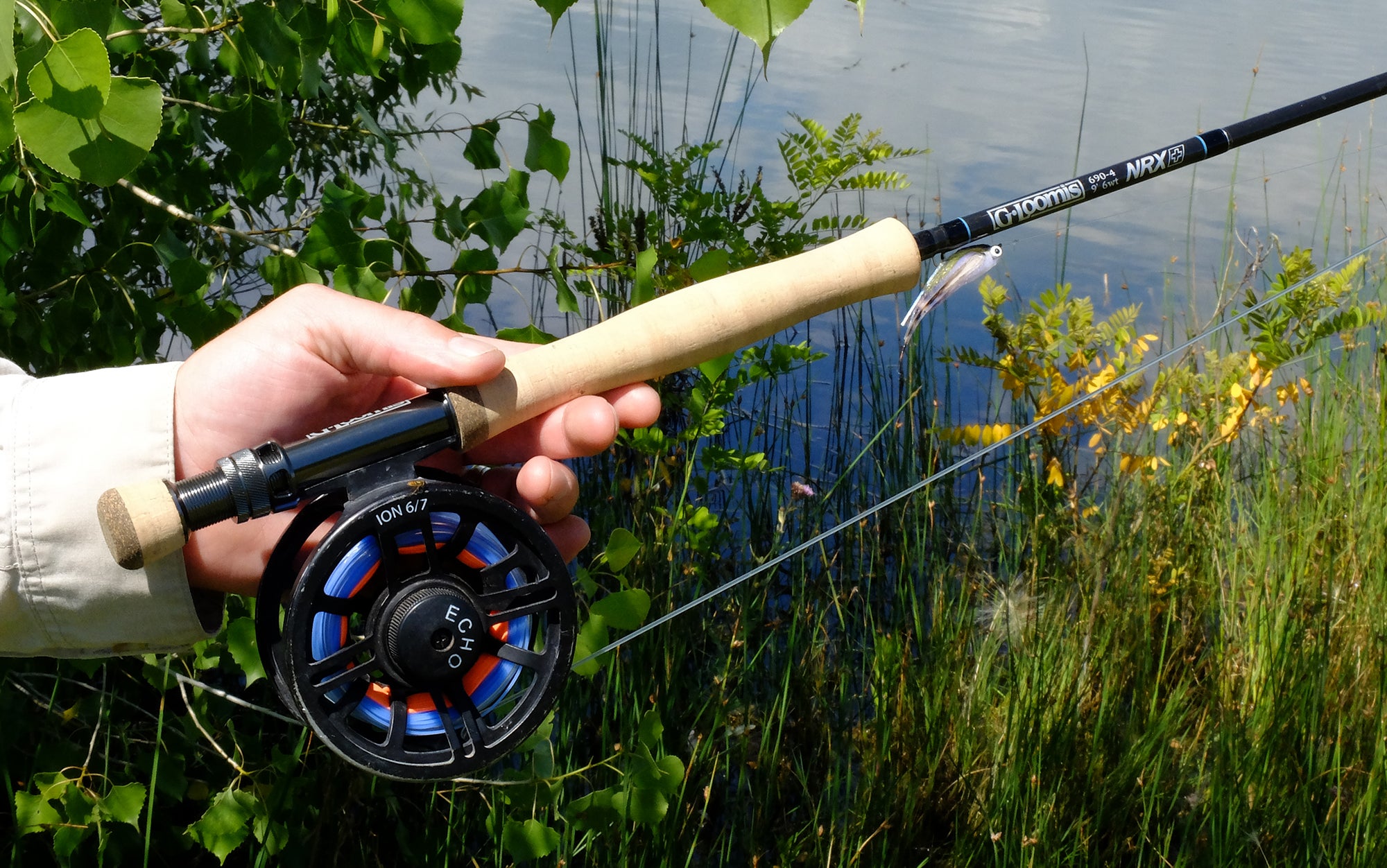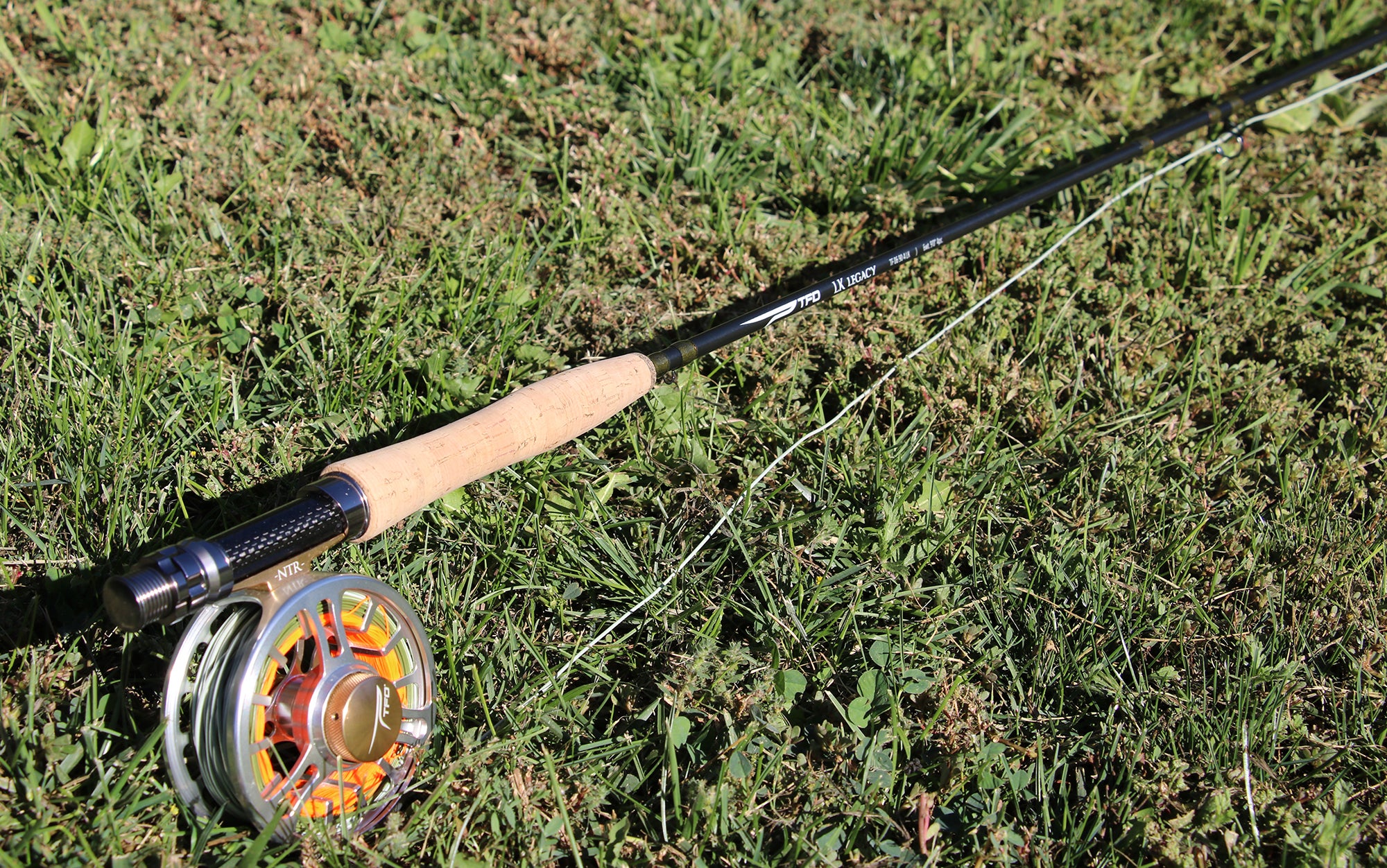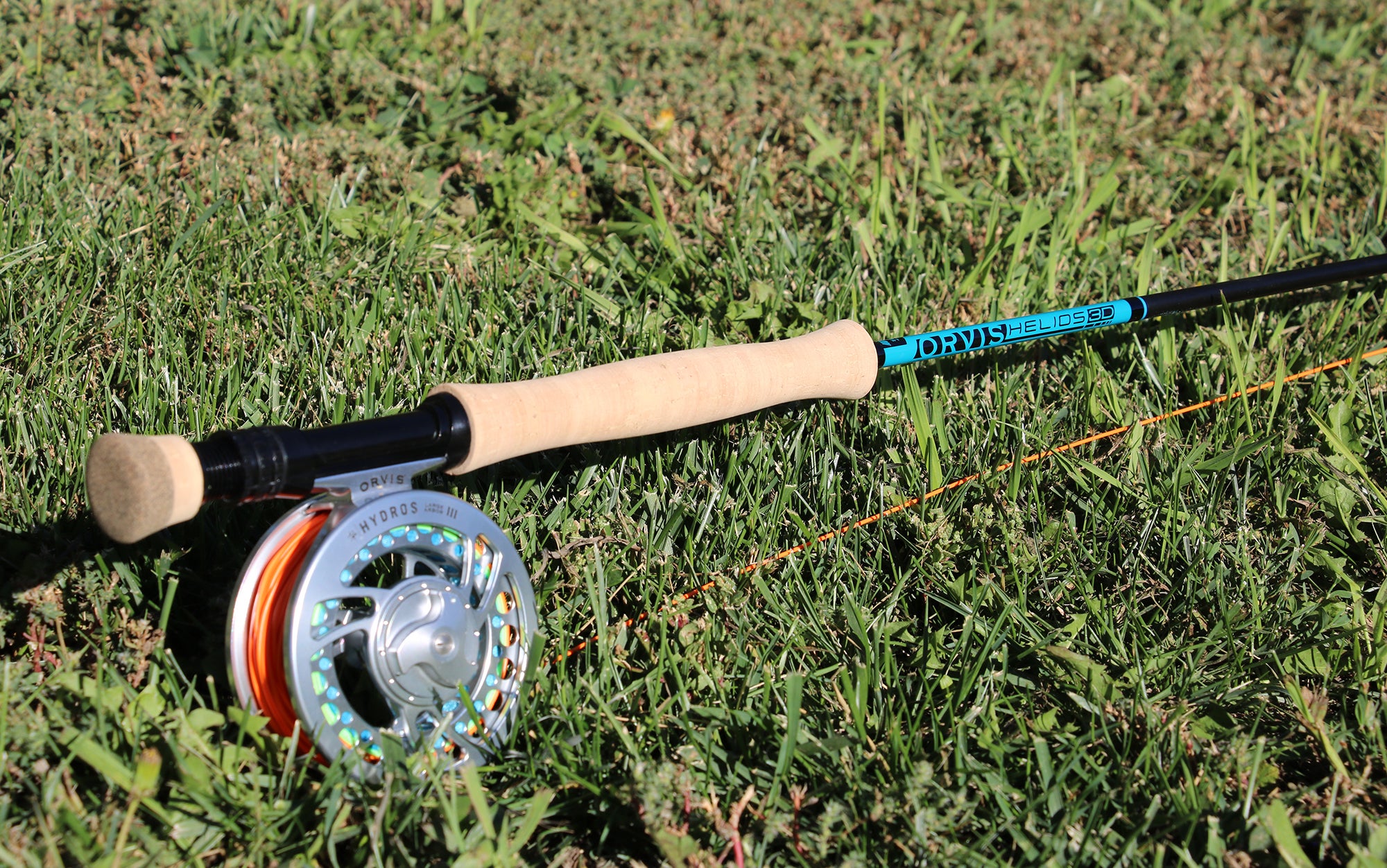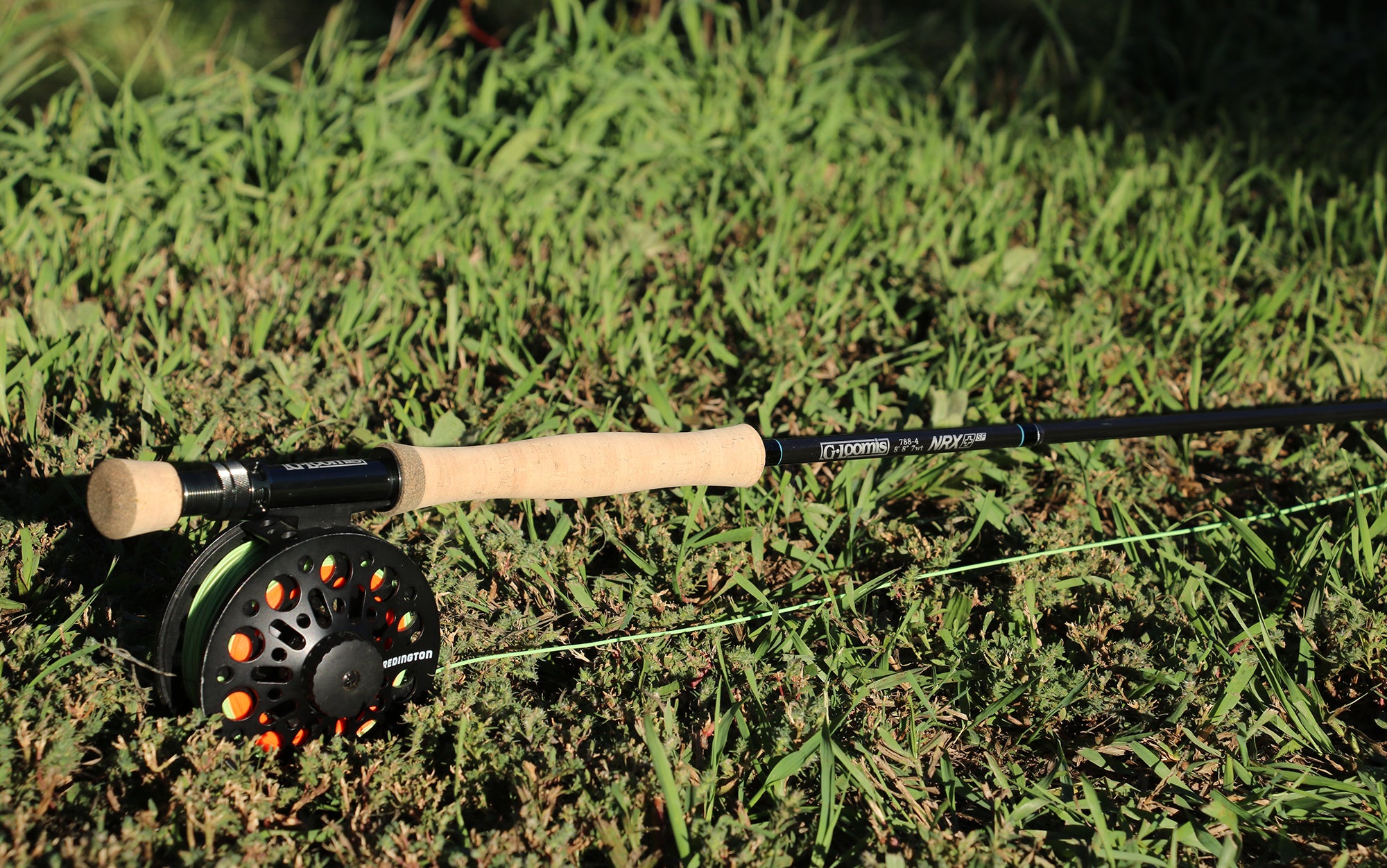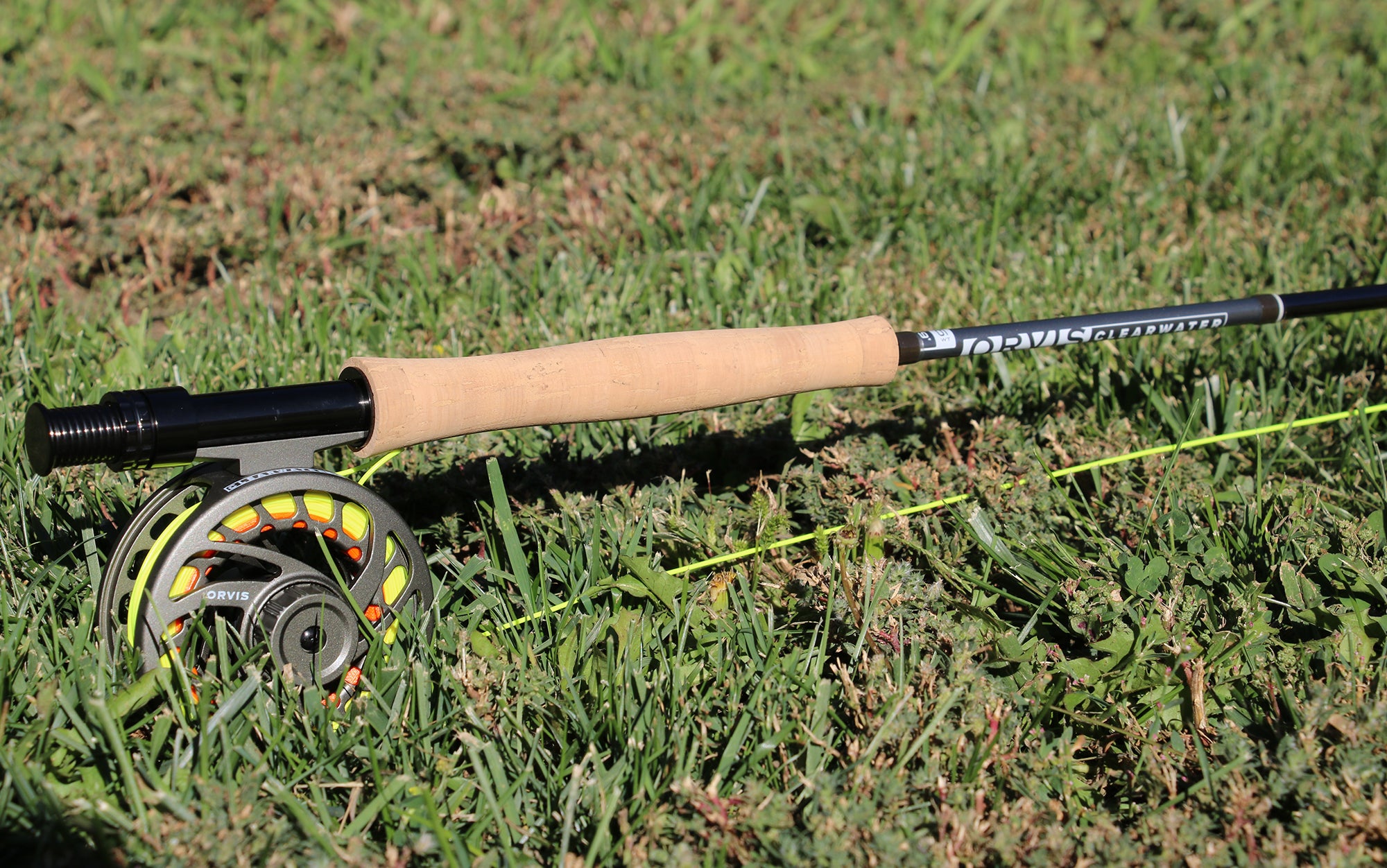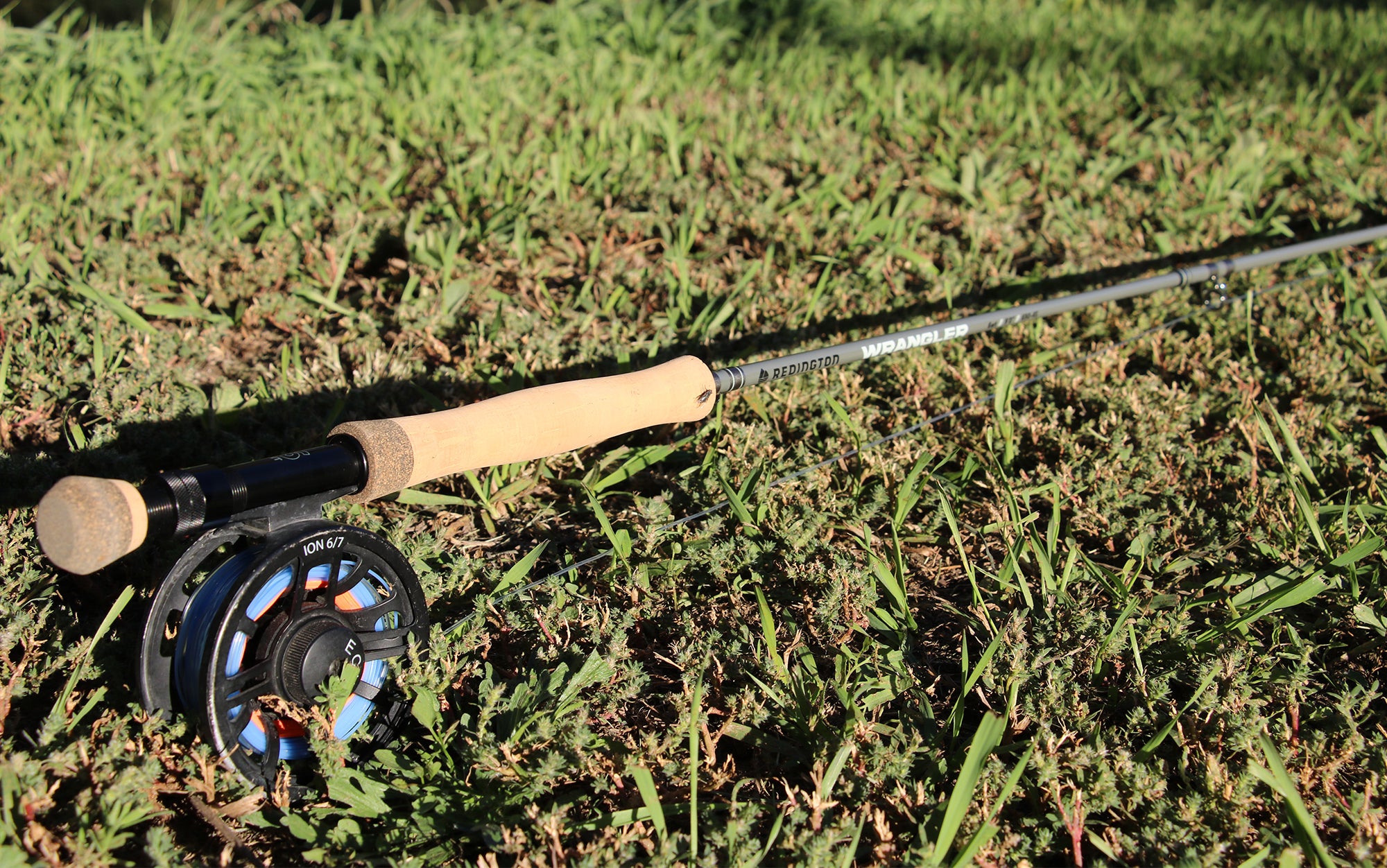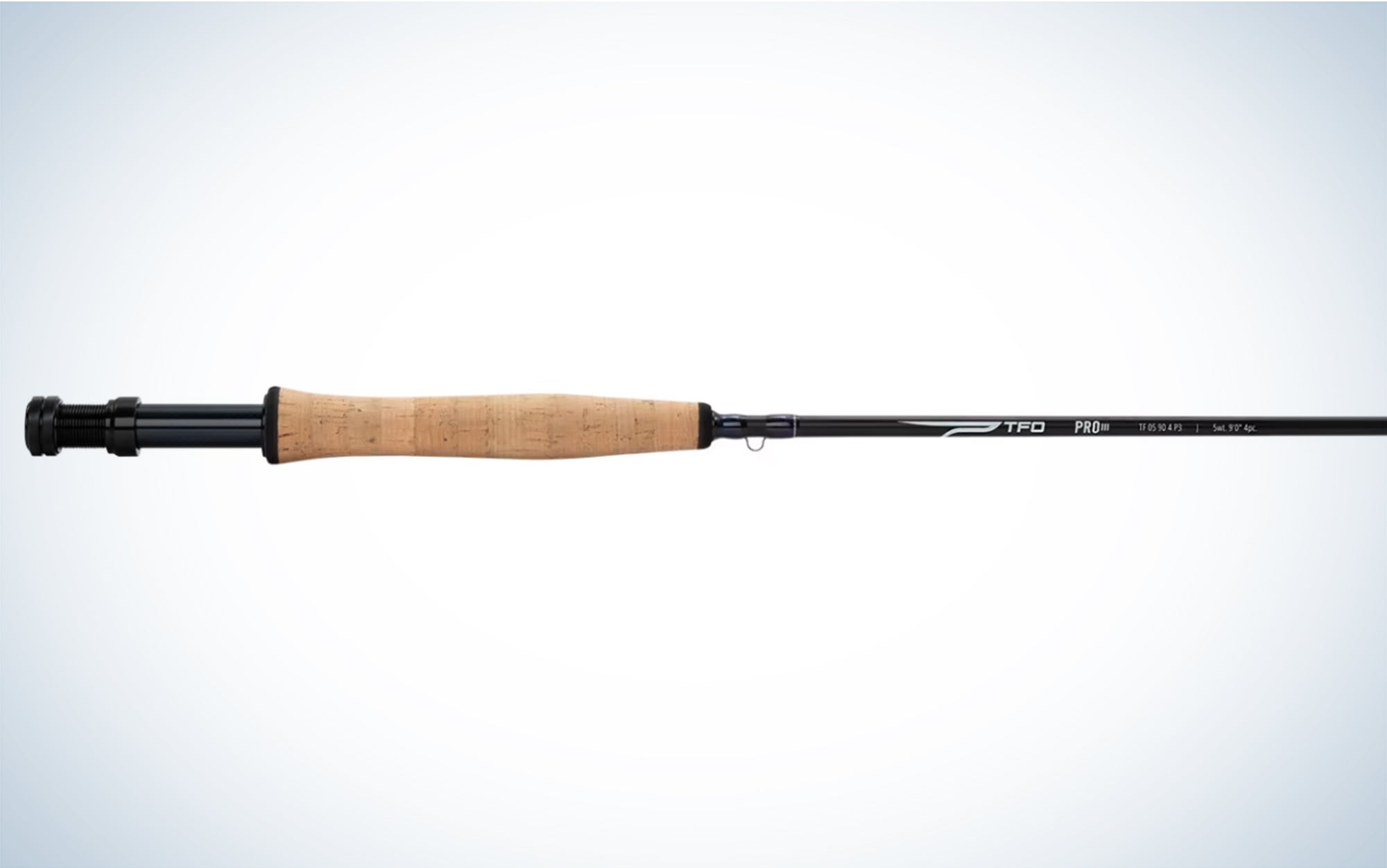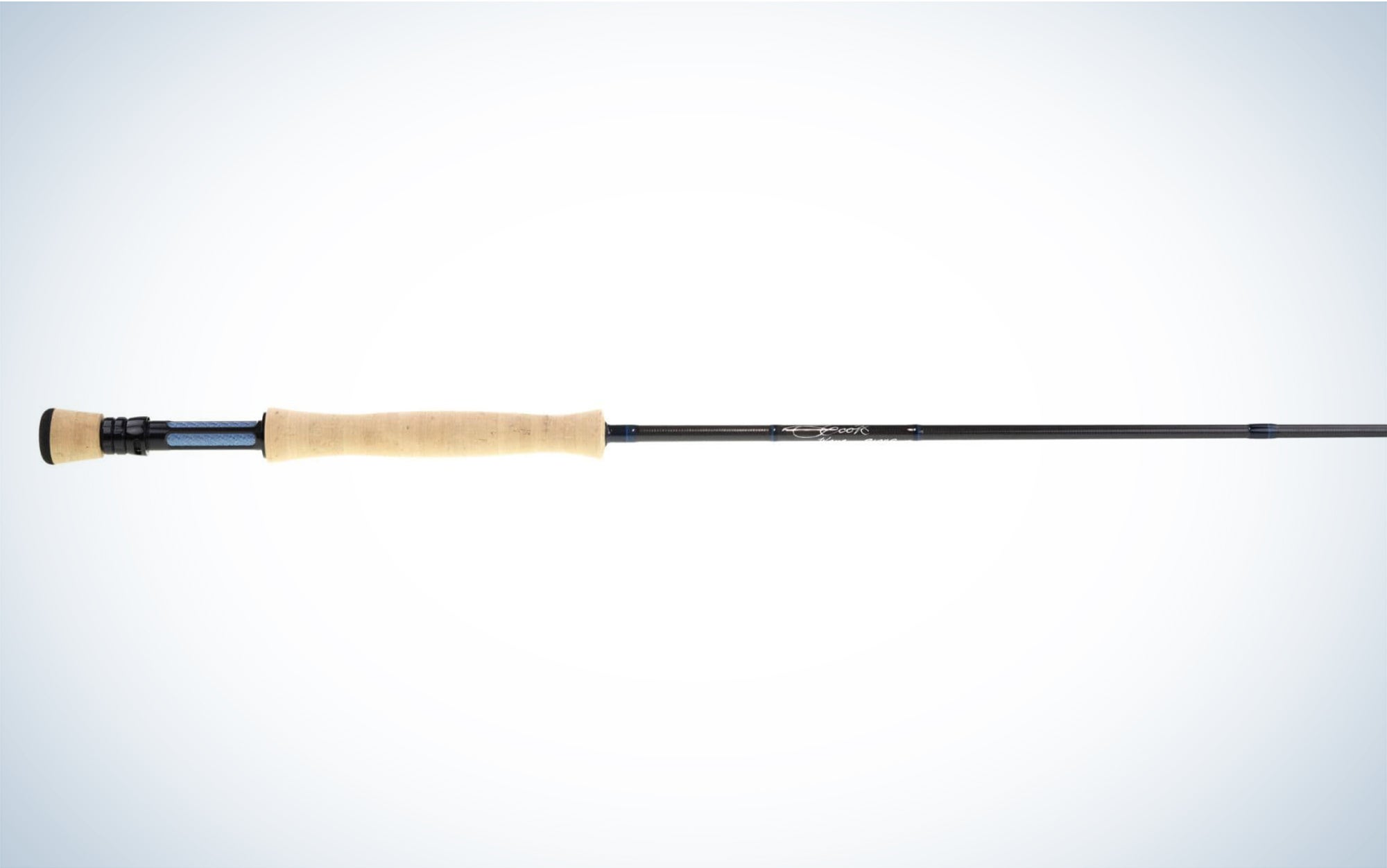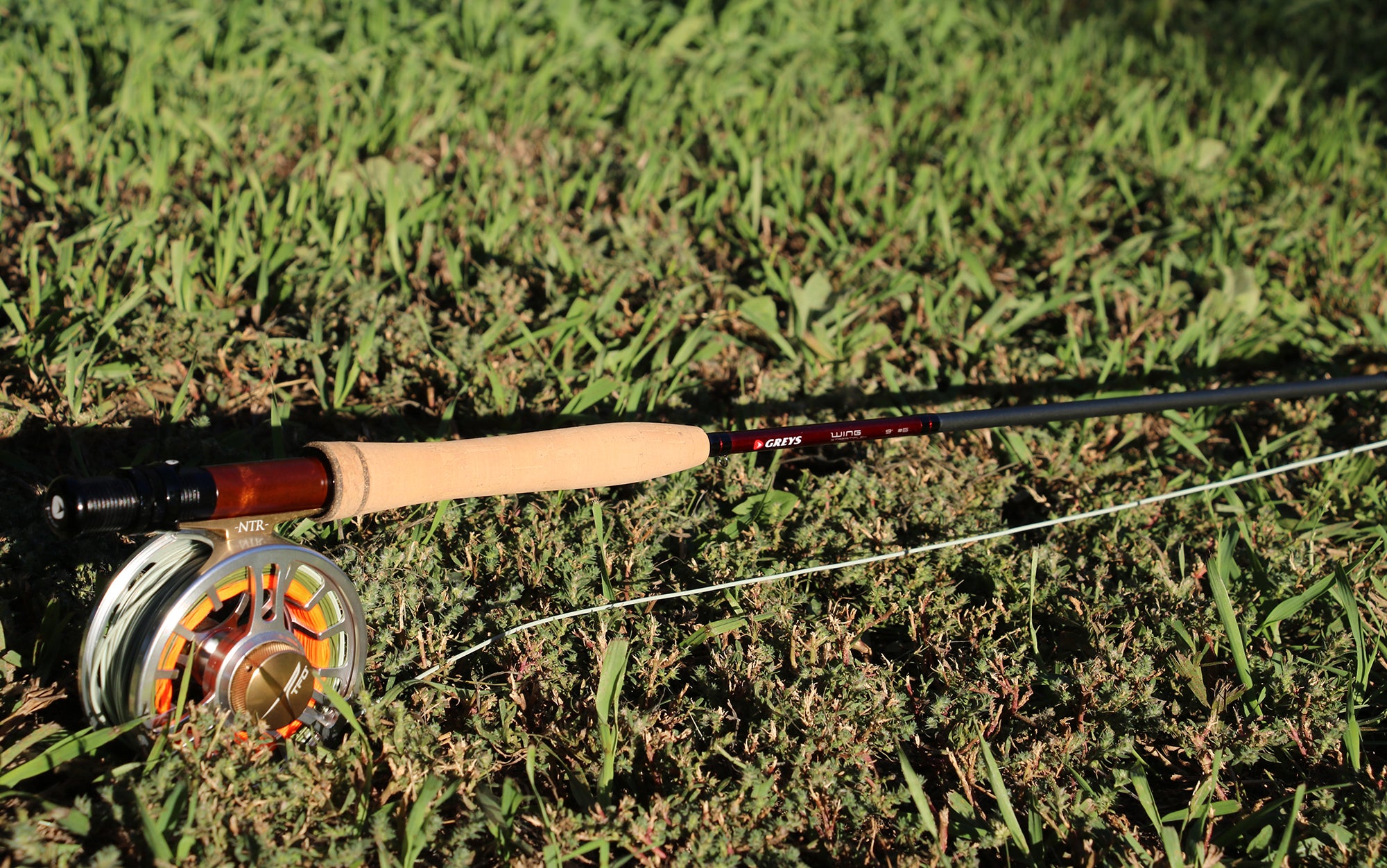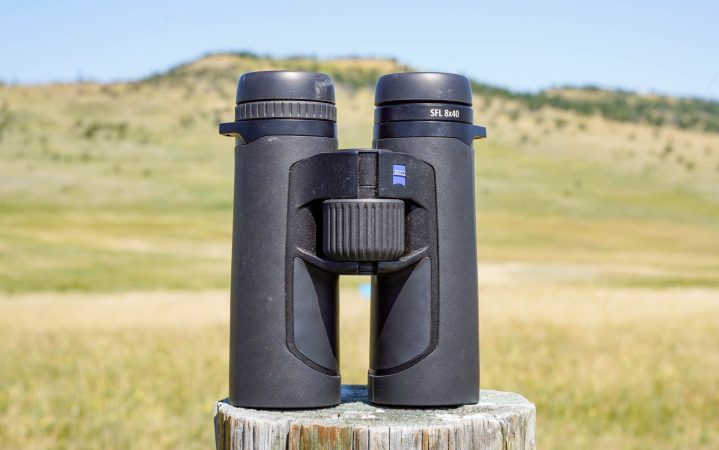The Best Fly Rods for Bass, Tested and Reviewed
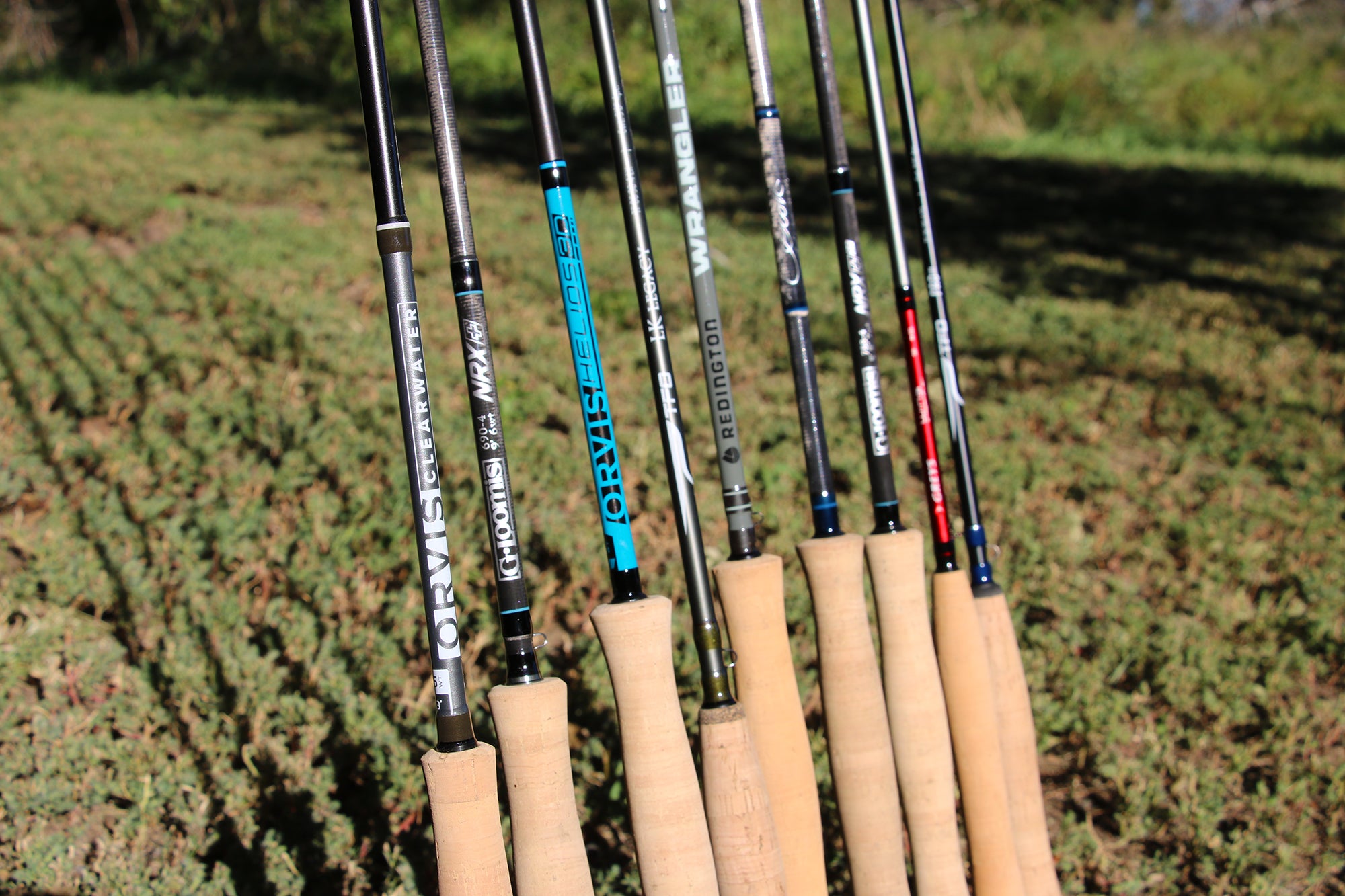
We may earn revenue from the products available on this page and participate in affiliate programs. Learn More ›
Fly fishing for bass isn’t always easy, and there are more effective ways to put a bunch of fish in the boat. But if there’s a more exciting way to catch bass, I haven’t found it yet.
If you want to have success, though, you’re going to need the right tools. A good place to start is by picking up one of the best fly rods for bass. You’ll need a rod that you can cast easily, quickly, and accurately, and one that is powerful enough to throw large flies and haul fish out of heavy cover. The single “best” rod will also differ from one person to another depending on their budget, experience level, and the style of fishing they like to do.
I’ve taken out most of the guesswork by thoroughly testing nine of the best fly rods for bass. Some of these rods are more suited to advanced casting styles, and others will be easier for beginners to get the hang of. But they’ll all catch fish.
- Best Overall: G. Loomis NRX+
- Best Value: TFO LK Legacy
- Best Distance: Orvis Helios 3D
- Best for Heavy Flies and Sinking Lines: G. Loomis NRX+ SF
- Best Starter Kit: Orvis Clearwater
- Best Starter Kit Under $300: Redington Wrangler
- TFO PRO III
- Scott Wave
- Greys Wing Streamflex
How I Tested the Best Fly Rods for Bass
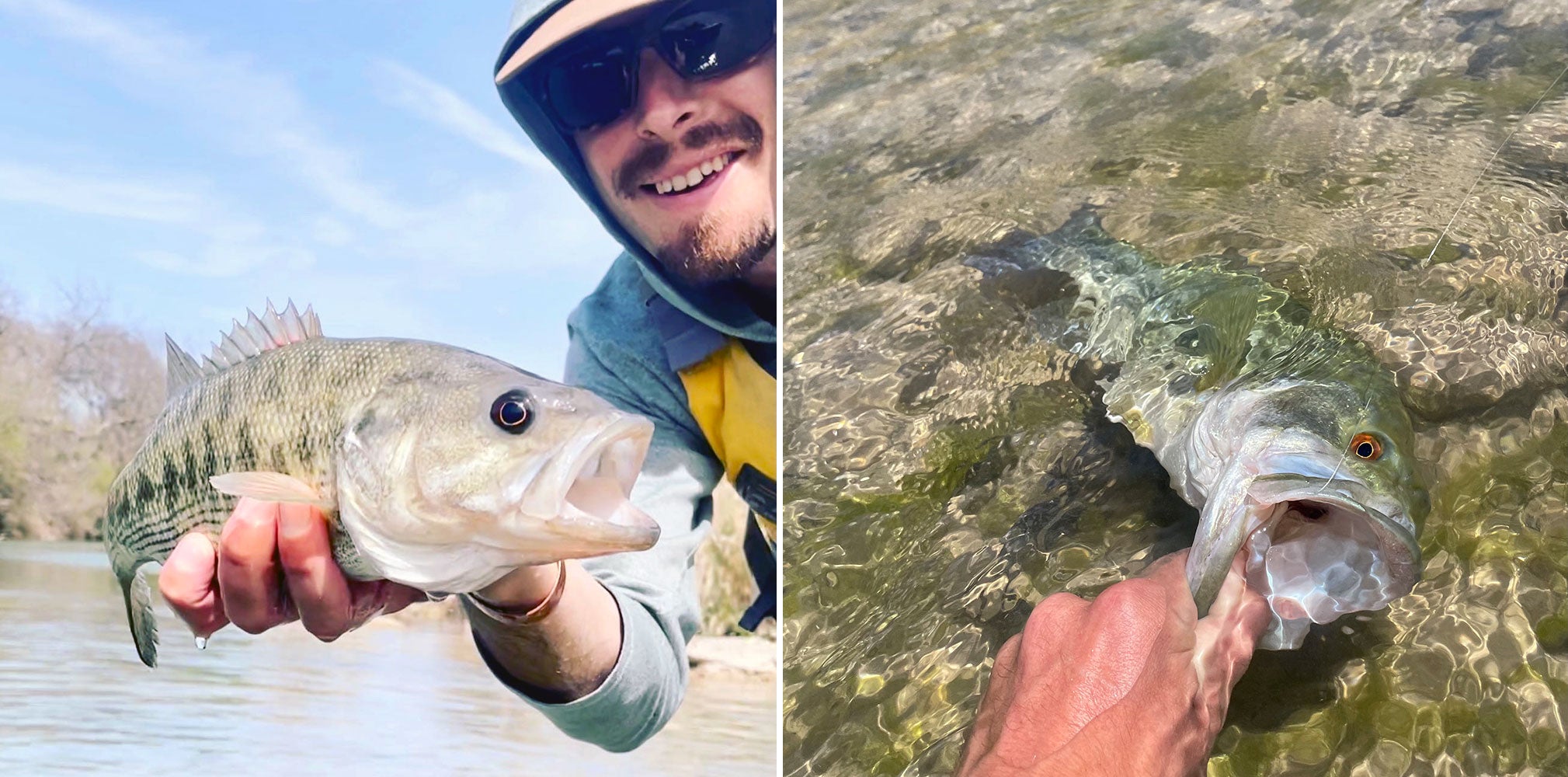
My testing procedure for narrowing down the best fly rods for bass involved an in-depth casting test on dry land, along with plenty of fishing time on the water. I’m an advanced caster and former fly-fishing guide. Although I now live in a state that’s more known for its trout fishing, I grew up in bass country in central Texas, and I’ve been chasing bass with a fly rod since I was 12 years old.
The Casting Test
The casting test was the most revealing, as it allowed me to compare these rods head-to-head and see their true potential. I also focused more on the casting side of the equation because every one of the rods on this list is capable of hooking, playing, and landing a bass.
I conducted all of the testing below using Scientific Anglers Mastery Bass Bug line, a Clouser minnow with the hook clipped off, and various reels that balanced these rods nicely.
Accuracy
I performed the accuracy test in an open field. I placed 20-inch by 20-inch circular targets at distances of 45 and 60 feet. I cast each rod at the 45-foot and 60-foot target three times, marking the number of times that the fly landed within the target. A perfect score would be a 6 out of 6.
Distance
I made five attempts to cast as far as I could. I marked down only the farthest distance but took consistency into consideration.
Ease of Casting
I gave each rod a score from 1 to 5 based on how easily it casted. This category was a little more subjective than the others, because a lot of it has to do with the “feel” of the rod, which is more subjective than the rod’s accuracy or overall casting distance.
Fishing the Rods
The waters I fished were mostly reservoirs and urban ponds in Colorado’s northern Front Range where I live.
I caught mostly smallmouth bass and a few largemouths on a variety of different flies. Since a lot of the best bass flies are bulky, wind resistant, and hard to cast, I made a point to throw a variety of these patterns. I used floating lines and tapered leaders with a 15-pound fluorocarbon tippet.
Build Quality and Warranty
I also judged the rods based on pure aesthetics. I looked at the fit and finish of each rod, including the quality of the cork handles, the guides, and the look of the blank (which is the actual graphite pole that forms the core of the rod). This is obviously a little more subjective than the other categories, but let’s face it, looks matter.
I also considered a few additional characteristics. For example, I make note of whether the rod was made in the U.S. or abroad. American-made rods are almost always more expensive, but a lot of anglers are willing to pay that extra cost. I also looked at the manufacturers’ warranty and repair programs. Every one of the rods on this list has some kind of warranty, but some have better warranties (and are easier or cheaper to repair or replace) than others.
Best Fly Rods for Bass: Reviews & Recommendations
Best Overall: G. Loomis NRX+ 690-4
Dac Collins
Score Card
- Accuracy: 6/6
- Ease of Cast: 5/5
- Max Distance: 85 Feet
Key Features
- 9-foot, 4-piece
- Fast action
- Micro full wells grip with fighting butt
- Aluminum up-locking reel seat, Titanium SiC stripper guides, single-foot recoil guides
- Made in the U.S.
Pros
- A good balance of accuracy and power
- Responsive and forgiving
Cons
- Expensive
The NRX+ stood out from the rest of the pack in nearly every category. It’s a powerful, accurate rod that can do everything a bass rod needs to do.
The first thing I noticed when I picked up the NRX+ was how light it was in hand. This made for an effortless casting stroke that allowed me to cast more accurately—and farther—than any other rod I tested. When I put some muscle into my stroke and double-hauled, I could almost cast the entire 90-foot fly line. And when I slowed down to use more of a finesse stroke, the rod maintained the same feel and accuracy.
When I took the rod fishing, it had no trouble casting some of the larger flies I tried out. The rod’s solid backbone also helped me make short work of the bass I hooked.
As a bonus, the NRX+ is a good-looking, utilitarian rod that’s made in the U.S. The single-foot recoil guides are unlike the typical snake guides that most rod-makers use, and while I didn’t love their looks at first, I can’t argue with their performance. The line shot through the guides with ease and they seemed plenty durable. The high-quality cork grip was comfortable in hand, and the double-locking aluminum reel seat held the reel in place through hours of fishing.
G. Loomis also has one of the best warranty programs in the industry. Their rods are guaranteed for life, and if you break it while hooked up with a fish, they’ll repair it for free. If you break it any other way, you’ll have to pay a repair fee.
Best Value: TFO LK Legacy 690-4
Dac Collins
Score Card
- Accuracy: 5/6
- Ease of Cast: 5/5
- Max Distance: 80 feet
Key Features
- 9-foot, 4-piece
- Fast action
- Half wells or full wells grip comes with or without fighting butt
- Carbon fiber up-locking reel seat, anodized stainless snake guides
- Made in South Korea
Pros
- High-end performance at a reasonable price point
- Great for beginners and expert casters alike
Cons
- Cork grip doesn’t feel as nice as some of the higher-end rods
The TFO LK Legacy is proof that you can still get a high-performing, fast-action fly rod for a reasonable price. This rod held up admirably against the more expensive models on the list, and even outmatched some of them.
Unlike some rods, which excel in specific fishing situations, the LK Legacy is more of an all-rounder. It was accurate and powerful enough for nearly any fishing scenario I threw at it, casting everything from small poppers to heavy crawfish patterns with ease.
What really makes this rod stand out, though, is how easy it is to cast. It’s still a fast-action rod, which means it flexes more at the tip instead of further down in the blank. This allows for higher line speed when casting, but requires the caster to time their back and forward casts more precisely. The LK Legacy seemed a little more forgiving in this department. It would make a great rod for an intermediate-level fly rodder who wants to take their game to the next level.
The rod I tested featured a half wells grip and no fighting butt, however TFO also offers a full wells grip and fighting butt option in the 9-foot, 6-weight model.
Although it’s made overseas, it’s a good-looking rod with solid components. It comes with a lifetime warranty, and TFO has a great reputation for turning repairs quickly and affordably.
Best Distance: Orvis Helios 3D 690-4
Dac Collins
Score Card
- Accuracy: 5/6
- Ease of Cast: 3/5
- Max Distance: 89 feet
Key Features
- 9-foot, 4-piece
- Fast action
- Full wells grip with fighting butt
- Aluminum up-locking reel seat, Titanium SiC stripper guides, REC recoil snake guides
- Made in the U.S.
Pros
- Very powerful in the right hands
- High-end fit and finish
Cons
- Not the easiest rod to cast for some anglers
- Expensive
The Helios 3D is the most powerful rod in the lineup, and it has a reputation as one of the best fast-action fly rods on the market today. Bass anglers who regularly cast long distances will appreciate what this rod can do.
The only problem with all that power is that it’s not always easy to harness. I cast the Helios 3D farther than any other rod in the test, but I found that doing so consistently was a challenge. This rod is better suited for intermediate to advanced fly anglers with a faster, more powerful casting style.
When fishing the Helios 3D, it felt a little more accurate when casting at longer ranges (50-70 feet) than it did at close range (30 feet or less). I was still able to tuck flies under the bushes, however, and I never felt limited by the rod in terms of what patterns I could throw. The stiffer rod allowed for solid hooksets and helped me land bass quickly.
The Helios 3D features high-end components and every Helios rod is made in the U.S. It comes with a 25-year warranty that’s backed by Orvis’ excellent customer service department.
Best for Big Flies and Heavy Cover: G. Loomis NRX+ SF 788-4
Dac Collins
Score Card
- Accuracy: 5/6
- Ease of Cast: 4/5
- Max Distance: 82 feet
Key Features
- 7-foot 8-inch, 4-piece
- Fast action
- Full wells grip with fighting butt
- Aluminum up-locking reel seat, Titanium SiC stripper guides, single-foot recoil guides
- Made in the U.S.
Pros
- A stout rod that can turn over the biggest flies with ease
- Shorter length can be a benefit in tight quarters
Cons
- Has a specific application and is not designed for lighter presentations
The NRX+ SF is made for throwing big flies to big fish. The “SF” stands for “swim fly”, as it was designed to cast some of the larger, swimbait-style flies that are designed for bass, pike, and other predatory fish. It also excels at throwing sink tips and full-sinking lines.
It’s a niche rod designed for turning over big flies and heavy lines that other rods would struggle with. The rod’s slightly shorter length (7 feet, 8 inches) makes it easier to cast in tight quarters without sacrificing much in the distance department. The shorter length also translates to more lifting power when fighting a fish.
As the lone 7-weight in the test, the NRX + SF felt a little overkill on some of the bass ponds I was fishing. But it could handle the biggest flies in my box without skipping a beat, and it was fun to fish in tight quarters. It would be a great rod for fishing narrow rivers and creeks with heavy cover, along with other waterbodies with lots of vegetation to work around.
Otherwise, the SF model is similar to the NRX+ in terms of the quality of the build, the components used, and the fact that it’s made in the U.S. It also comes with the same rock-solid warranty as other G. Loomis rods.
Best Starter Kit: Orvis Clearwater 690-4
Dac Collins
Score Card
- Accuracy: 3/6
- Ease of Cast: 4/5
- Max Distance: 75 feet
Key Features
- 9-foot, 4-piece
- Moderate action
- Modified full wells grip without fighting butt
- Aluminum up-locking reel seat, ceramic-lined chrome stripper guides, chrome snake guides
- Made in China
Pros
- An affordable and convenient package for the newbie angler
- Fairly responsive for a slower-action rod
Cons
- Intermediate to advanced casters might feel limited by the rod’s capabilities
The Orvis Clearwater kit is a great starting point for anyone who wants to try fly fishing for bass but is intimidated by all the gear required to build a setup. It comes with everything you need to hit the water, including a reel spooled with backing, a floating fly line, and a tapered leader. Just add a fly and you’re ready to fish.
I enjoyed fishing with the Clearwater, and I only felt limited when casting ultra-heavy crawfish patterns. But most beginner anglers don’t need (or want) to fish the heaviest possible flies at first, and I had no issues hooking or landing fish with the Clearwater.
The rod is designed for people who have never cast a fly rod before. It has a slower moderate action and bends deeply, which allows the angler to feel the rod load more when casting. The trade-off is that it’s not incredibly accurate or powerful, and intermediate to advanced casters might eventually feel limited by the rod. As with other starter kits, you can always upgrade the fly line for better performance.
The Clearwater kit is a convenient package that includes everything you need to get started. It’s backed by Orvis’ 25-year warranty program.
Best Starter Kit Under $300: Redington Wrangler 690-4
Dac Collins
Score Card
- Accuracy: 3/6
- Ease of Cast: 4/5
- Max Distance: 70 feet
Key Features
- 9-foot, 4-piece
- Moderate action
- Full wells grip with fighting butt
- Aluminum up-locking reel seat, ceramic-lined chrome stripper guides, chrome snake guides
- Made in China
Pros
- Most affordable rod in the lineup
- Comes with everything you need to hit the water
Cons
- Made in China with basic components on a fairly drab blank
Redington has been offering starter fly rod kits for decades, and the Wrangler carries on this tradition. It’s an affordable option for beginners who are just getting into the sport.
When trying to choose the best beginner kit, it was a toss-up between the Orvis Clearwater and the Wrangler. They both had a similar action and beginner-friendly feel, and they were neck-in-neck in terms of power and accuracy. I was able to cast the Clearwater a little farther, although the difference was minimal. The differences I felt when fishing were also negligible, but the Wrangler felt a bit heavier, which would make a difference when casting to bass all day.
The Clearwater also got the nod because the Orvis Clearwater reel felt more solidly built than the Redington Crosswater reel. Orvis also has a better warranty program than Redington. The tradeoff is that the Orvis kit costs nearly $200 more, which is significant when buying your first rod.
TFO Pro III 690-4
TFO
Score Card
- Accuracy: 4/6
- Ease of Cast: 5/5
- Max Distance: 76 feet
Key Features
- 9-foot, 4-piece
- Moderate-fast action
- Half wells or full wells grip comes with or without fighting butt
- Aluminum up-locking reel seat, SiC titanium stripping guides, anodized stainless snake guides
- Made in South Korea
Pros
- A solid all-around fly rod for the money
- Designed to make you a better caster
Cons
- Not as efficient when casting the biggest bass flies all day long
The Pro III is the newest iteration in TFO’s Pro series, which are designed with beginner to intermediate anglers in mind. It’s noticeably slower than the LK Legacy and it’s not quite as accurate or powerful as that rod. But it’s not supposed to be. It’s billed as a “casting improvement tool,” and its slower action allows the angler to feel the rod load and adjust their cast accordingly.
The Pro III was an effective fishing tool, but its versatility means it’s not exactly a bass-specific rod. It turned over some of the bigger bass flies, but not as efficiently as some of the other rods in the lineup. It would be a good crossover rod for bass anglers who occasionally target trout and other game fish with smaller flies and lighter presentations. The version I tested featured a half wells grip and no fighting butt, but TFO offers a full wells grip and fighting butt options, too.
Still, it’s a step up from the Clearwater and the other beginner kits in terms of overall performance. It’s a rod that intermediate anglers can grow into. It would also make a great backup should you decide to upgrade to a higher-end rod.
Like the LK Legacy, the Pro III is designed in the U.S. but manufactured in South Korea. It comes with the same lifetime warranty as every other TFO rod.
Scott Wave 690-4
Scott
Score Card
- Accuracy: 4/6
- Ease of Cast: 3/5
- Max Distance: 80 feet
Key Features
- 9-foot, 4-piece
- Fast action
- Full wells grip with fighting butt
- Aluminum/graphite up-locking reel seat, SiC titanium stripper guides, recoil snake guides
- Made in the U.S.
Pros
- A good-looking rod made in the U.S. with high-end components
- Plenty of power and backbone
Cons
- Not quite as accurate with less feel than some of the other rods
The Wave fills an interesting niche in Scott’s lineup. It’s meant to be a middle-of-the-road option for anglers who want a high-performance rod without paying top dollar. It’s also part of the all-water rod trend. These rods are designed to fish in both fresh- and saltwater, and they offer a good blend of touch and power.
The Wave is one of the faster and stiffer rods in the lineup. While fishing with the rod, it provided plenty of power when casting into the wind. The stiff butt section also gives the angler more lifting power—which came in handy when trying to keep bass out of the sticks and weeds. The downside to this stiffness is that it’s harder to feel the rod load, and it wasn’t quite as accurate as some of the other options.
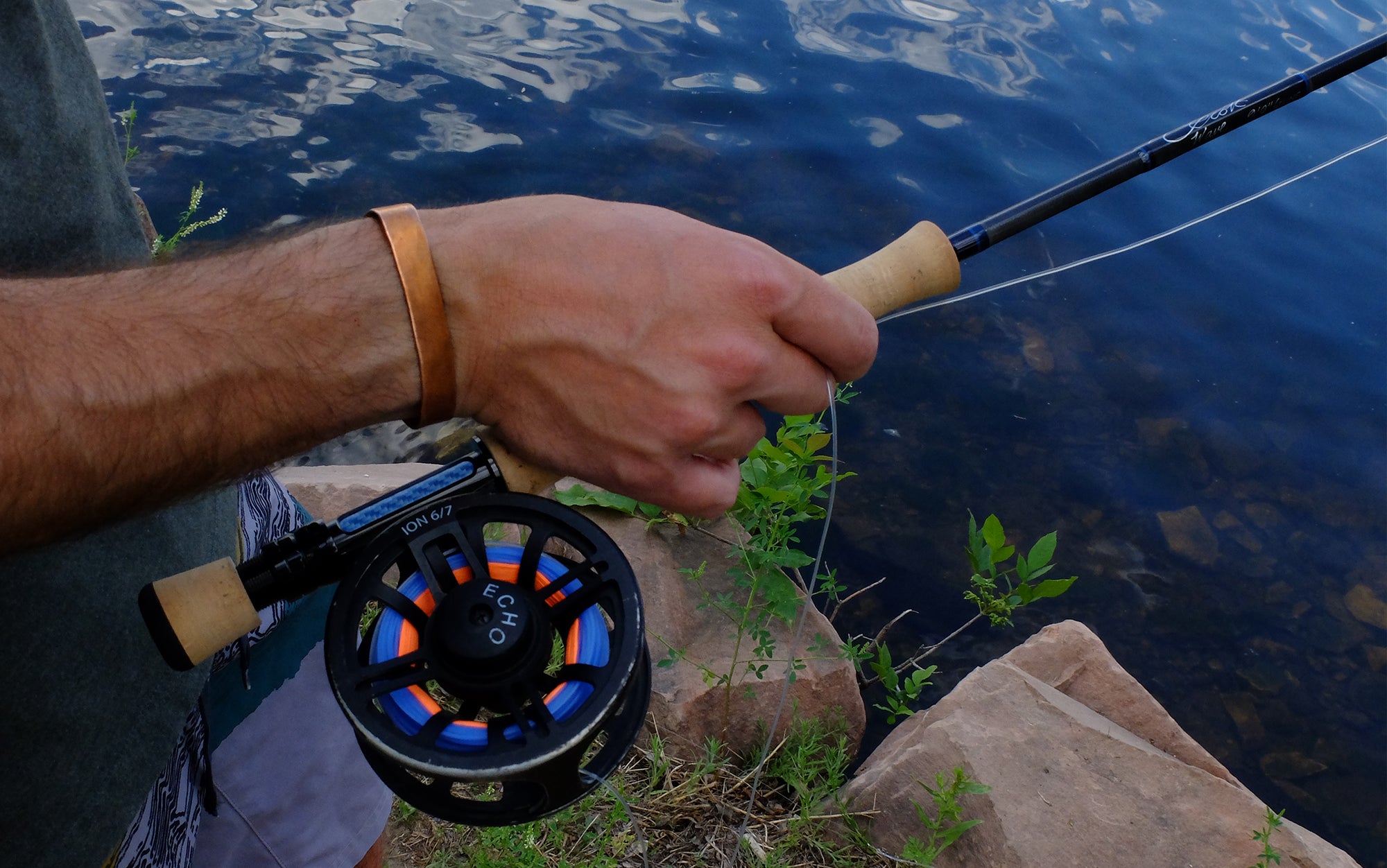
Scott also makes some of the best-looking rods on the market, and this one is no exception. And because the Wave features saltwater-resistant components, it’s a great option for freshwater bass anglers who occasionally dip their toes in the salt. But for my money, I’d cough up another $370 and upgrade to the Scott Sector, which was the best overall pick in our review of the best saltwater fly rods.
Greys Wing Streamflex 690-4
Dac Collins
Score Card
- Accuracy: 3/6
- Ease of Cast: 3/5
- Max Distance: 72 feet
Key Features
- Length: 9-foot, 4-piece
- Medium-fast action
- Half wells grip without fighting butt
- Alloy/wood up-locking reel seat, with wood spacers, ceramic-lined chrome stripper guides, chrome snake guides
- Made in Taiwan
Pros
- Softer action is a little more forgiving
- A sleek rod with a high-end fit and finish
Cons
- Lacks the punch to consistently turn over large flies with authority
Like the LK Legacy, the Wing isn’t necessarily a “budget rod”, but it’s an affordable option that’s roughly a third the price of the most expensive rods in this lineup. It’s also a solid performer with a beautiful fit and finish that’s on par with some of those pricier rods. The wooden reel seat, AAA grade cork, and the touches of red on the blank and guide wraps help the rod stand out from the rest.
In terms of on-the-water performance, the Wing is billed as a medium-fast action rod, but it felt softer than some of the other rods and lacked the punch required to turn over heavier flies in the wind. This can be a benefit when making more delicate presentations at close range, but it wouldn’t be my first pick when casting to the biggest largemouths. That said, it would be a good option for anglers targeting bluegills, crappies, and smaller bass.
The only other knock against the Wing is the size of the cork grip. It’s noticeably narrower than some of the other grips I tested, and it felt a little too small for my hand. (I don’t have huge hands and typically wear a size large glove.) At the same time, the smaller grip is something that kids, women, and other anglers with slightly smaller hands might appreciate.
How to Choose a Fly Rod for Bass
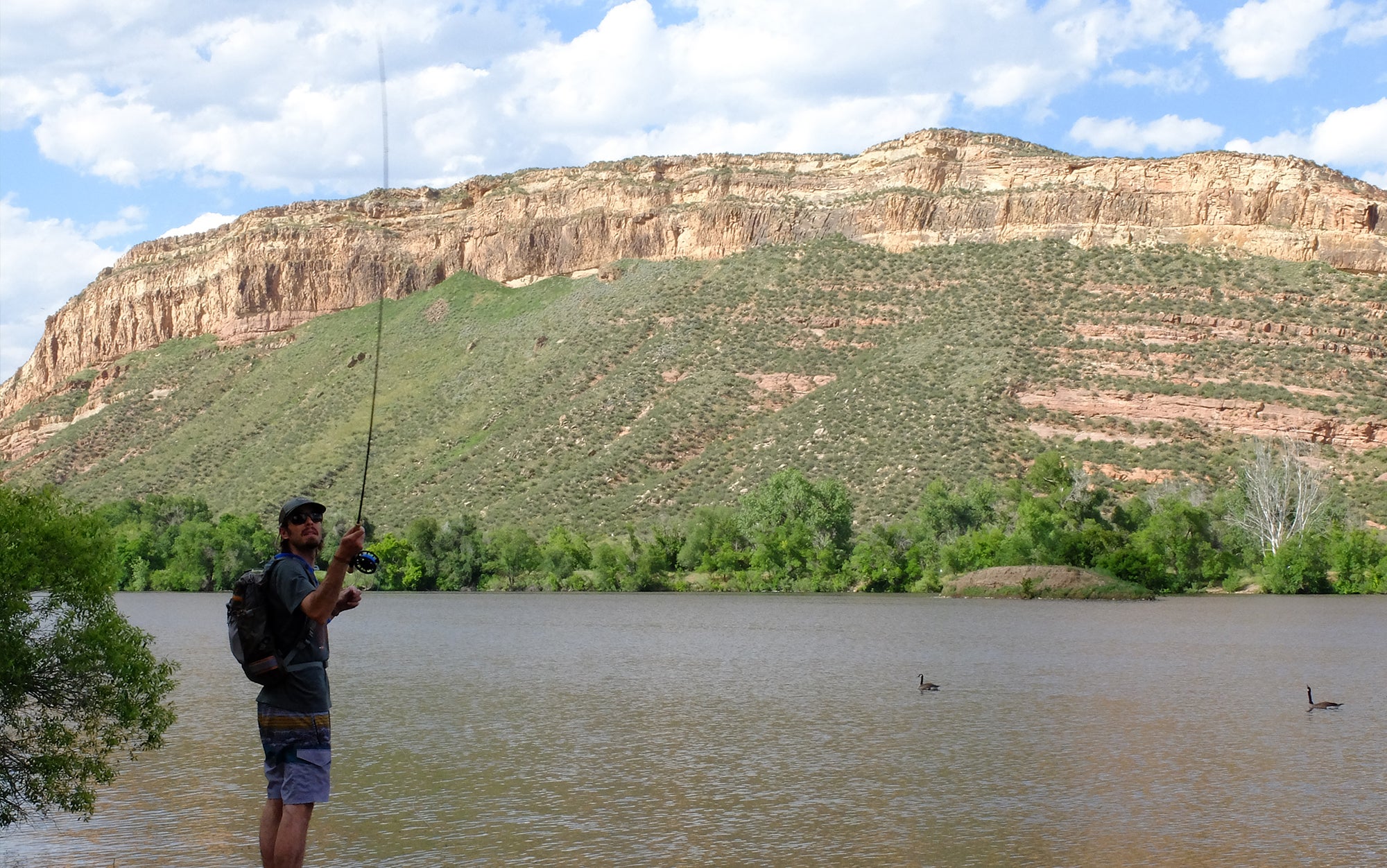
What Weight to Choose
The first consideration when choosing a fly rod for bass is what weight to go with. I focused on 6-weight rods for this test because it’s a good middle-of-the-road size that can be used in a variety of different bass-fishing scenarios—from blind-casting at structure to sight-casting in a clear river. These rods also work great for casting streamers to trout and other game fish. The 6-weight rods I tested are the standard 9-foot length, and they all break down into four pieces, which makes traveling more convenient.
I had to throw in one shorter 7-weight because some bass fishing scenarios call for a heavier rod, especially when casting large, wind-resistant flies and heavier sinking lines. But all the 6-weight’s I reviewed are offered in 7-weight versions as well. These rods share most of the same characteristics as their 6-weight counterparts but might cast a little differently depending on the model. Something to keep in mind if you’re shopping specifically for a 6- or a 7-weight.
If you really want to break out the big guns and step up to an 8-weight for bass fishing, check out our review on the best saltwater fly rods, which can do double duty in freshwater.
How Much to Spend
The next most important consideration is price. Fly fishing is notoriously expensive, and getting started in the sport requires a little more gear than conventional fishing. This can turn some people off, but it doesn’t have to. There are plenty of affordable rods (under $400) to choose from. That’s why I included two starter kits that come with everything you need to go bass fishing.
If you don’t go with a starter kit, you’ll also have to factor in the cost of a reel and a fly line in addition to the rod—which comes out to $200 or more depending on the reel you choose.
Higher-end rods that are closer to the $1,000 mark are typically made in the U.S. and feature better components. They’re also lighter and more responsive, which makes it easier to cast a fly farther and more accurately. This is something that experienced casters will notice right away.
It’s important to point out, though, that some of the more expensive, fast-action rods on the market today will be easier for an experienced angler to cast well, but hand that same rod off to a beginner and they’ll struggle. With some of the slower-action rods, by comparison, it’s easier to feel the rod load and make a good cast, which is a huge help when learning how to cast.
Another reason for the high cost of fly rods is that warranties are now standard across the industry. Fly rods (especially the tips) are very easy to break. Manufacturers assume that each rod will come back at least once, and they factor this into the overall price.
Try It Before You Buy It
Choosing the right fly rod can be a highly subjective process because everyone has a slightly different casting style. This review is meant to help you narrow down your options, but I still highly recommend casting any rod before you pull the trigger. The best place to do this is at your local fly shop.
Why Trust Outdoor Life?
Since 1898, OL has been a leading authority in testing and reviewing hunting gear, fishing tackle, guns and shooting equipment, and much more. We have more than a century-long history of evaluating products, and we’re now bringing that expertise to online reviews. Our editors are experienced outdoorsmen and women, and most importantly, we’re trained journalists. We prioritize field testing and objective data when reviewing products. We conduct interviews with gear manufacturers and engineers as well as outdoor experts so that our readers have an understanding of how and why a product works—or doesn’t.
Advertising does not influence our gear reviews and it never will. While we always focus our coverage on standout products—because we want our readers to be aware of the latest and greatest gear—we also cover the flaws and quirks of any given product.
Final Thoughts on the Best Fly Rods for Bass
At the end of the day, a fly rod is just a tool to catch fish, and every rod on this list will get the job done on your local bass lake or river. Still, there were a few clear winners that stood out from the rest of the pack. The G. Loomis NRX + is a great option for hardcore anglers with some money to spend. The Helios 3D and Scott Wave should also be on their short list. If you’re on a budget, however, the TFO LK Legacy is worth a closer look. And if you’re brand new to the sport, I’d recommend going with one of the starter kits.
- Best Overall: G. Loomis NRX+
- Best Value: TFO LK Legacy
- Best Distance: Orvis Helios 3D
- Best for Heavy Flies and Sinking Lines: G. Loomis NRX+ SF
- Best Starter Kit: Orvis Clearwater
- Best Starter Kit Under $300: Redington Wrangler
- TFO PRO III
- Scott Wave
- Greys Wing Streamflex
The post The Best Fly Rods for Bass, Tested and Reviewed appeared first on Outdoor Life.
Articles may contain affiliate links which enable us to share in the revenue of any purchases made.
Source: https://www.outdoorlife.com/gear/best-fly-rods-for-bass/
